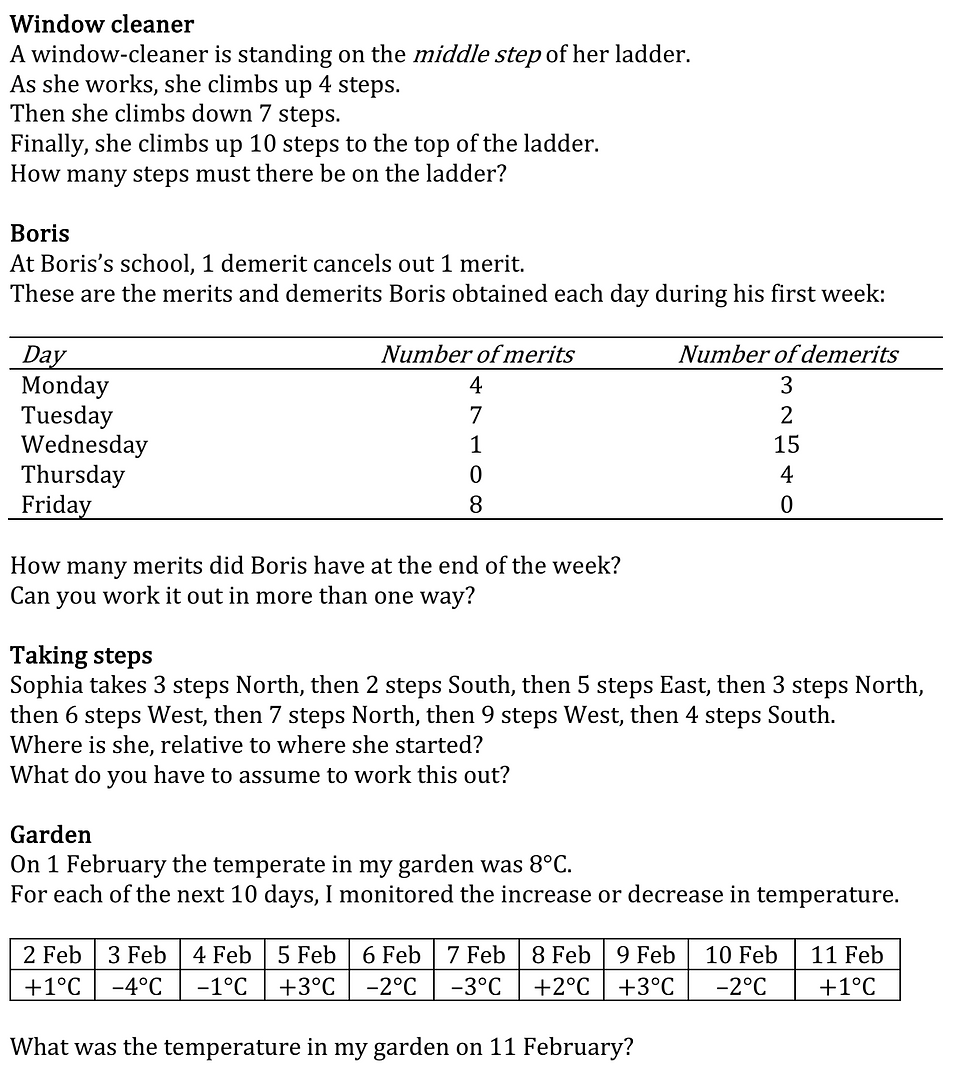MYP Maths Teacher Toolkit: Directed Numbers
- Teaching MYP Maths

- Dec 23, 2024
- 3 min read
Updated: May 27
Welcome to the first post in what will hopefully be an ongoing series of curated resources for teaching and learning topics within the MYP Maths framework. Each post will highlight materials that align with the 6 IB Approaches to Teaching (ATT): collaborative, concept-driven, contextualised, differentiated, informed by assessment, and inquiry-based.
This post is focused on adding and subtracting with negative numbers.
The goal? Quality over quantity. This isn’t an exhaustive list, but a carefully selected collection that is rich, balanced, and practical. It would be great for this to be an evolving community resource, so feel free to share your own suggestions in the comments!
ATT 1: Collaborative
Resource: Up, Down, Flying Around – Board/Card Game
This engaging two-player game gets students working together while exploring number operations. Players flip two cards on their turn and move their hot air balloon up or down the number line based on the result:
Add (+5) – Add 5 hot puffs of air and move up 5.
Subtract (-3) – Remove 3 sandbags, also moving up the number line, but only 3 places.
The winner is the first to reach +20 or push their opponent down to -20. While there’s a bit of prep involved in cutting out the materials, the collaborative gameplay ensures students actively engage in concept-driven learning as well!
ATT 2: Concept-Driven
Resource: Coloured Counters
These virtual manipulatives are excellent for exploring integers. Counters visually demonstrate:
The absolute value of positive and negative integers.
How integers can balance or cancel out during calculations.
This resource provides students with a conceptual foundation for understanding addition and subtraction of integers, moving them beyond memorisation to deeper comprehension.
ATT 3: Contextualised
Resource: 8.7 in the Lumen Curriculum (page 13)
This page shares 4 problems with directed numbers in context. Generally, this free to access folder has a great range of resources and activities to engage students' thinking.

ATT 4: Differentiated
Resource: Transum Levels 1–3
This self-checking tool allows students to work at their own pace or at levels assigned through formative assessment:
Level 1 – Positive subtract positive.
Level 2 – Negative plus positive.
Level 3 – Mixed problems, including calculations with three terms.
This resource provides differentiation by accommodating varied abilities and readiness levels, ensuring all learners can progress confidently.
ATT 5: Informed by Assessment
Resource: Always, Sometimes, Never
This versatile activity is perfect for assessing prior knowledge and identifying misconceptions. For example, the statement "Two negatives make a positive" often gets repeated without clarifying the operation involved.
Give small groups a set of statements to categorise and justify as always, sometimes, or never true. This activity:
Encourages discussion and deeper understanding.
Allows teachers to gather insights into student thinking and tailor instruction accordingly.
ATT 6: Inquiry-Based
Resource: Don Steward – Four Points
This exploration encourages students to investigate patterns and relationships. Start with four points (e.g., 1, 3, 8, 4) and challenge them to add a fifth point:
Fifth point: 5 – Differences: -4, -2, 3, -1. Sum: -4.
Fifth point: 4 – Differences: -3, -1, 4, 0. Sum: 0.
Fifth point: 2 – Differences: -1, 1, 6, 2. Sum: 8.
Encourage students to record findings, identify patterns (e.g., sums as multiples of 4), and test conjectures. Prompt them to link observations to the mean and develop generalisations.
Each of these resources is carefully chosen to support one of the 6 IB Approaches to Teaching while offering flexibility and creativity in the classroom. Whether you're looking to foster collaboration, spark inquiry, or reinforce conceptual understanding, these tools can help you create a dynamic and engaging learning environment.
What are your go-to resources for teaching integers? Share your ideas in the comments and let’s keep building this toolkit together!





.png)


Comments